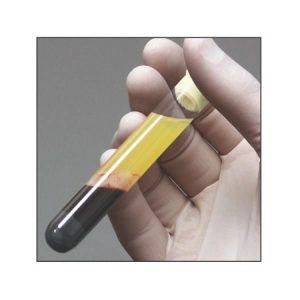 Every year, doctors and researchers make advances in the treatment of hair loss. We have come a long way in the last decade or so in developing more effective and less invasive procedures and techniques that result in more natural-looking heads of hair. Remember plugs? We barely do, as technology has long since passed them by. Now, new research has added further support for a potentially revolutionary treatment for certain types of pattern baldness which uses the body’s natural healing processes to restore lost hair.
Every year, doctors and researchers make advances in the treatment of hair loss. We have come a long way in the last decade or so in developing more effective and less invasive procedures and techniques that result in more natural-looking heads of hair. Remember plugs? We barely do, as technology has long since passed them by. Now, new research has added further support for a potentially revolutionary treatment for certain types of pattern baldness which uses the body’s natural healing processes to restore lost hair.
Platelet-rich plasma (PRP) is a new biotechnology which has been used with increasing frequency to aid in the healing of injuries or speed recovery after surgery and is also being used to help fix dermatological problems.
Now, a report just published in the journal Skin Appendage Disorders suggests that PRP may help in the treatment of androgenic alopecia, the most common form of pattern baldness. Over 95 percent of hair loss cases in men and women is caused by androgenic alopecia, and up to 80% of men and 50% of women are affected by androgenic alopecia during their lifetime.
What is Platelet-Rich Plasma?
Platelets are the clotting cells of our blood, but they are also enriched with growth and healing factors that will initiate repair and provide assistance to stem cells in damaged muscle, tendon, and ligaments.
PRP contains various growth factors and cytokines that enhance the body’s inherent capacity to repair and regenerate. PRP therapy essentially takes the body’s natural processes and essentially turbocharges them. A sample of blood is taken from the patient and then placed in a centrifuge where the platelets are separated from other elements of the blood. As used in the treatment of injuries and trauma, that platelet-rich plasma is then injected into the injured tissue, stimulating the work that the body is already doing.
How Does PRP Treat Hair Loss?
After reviewing 12 previous studies involving PRP and the treatment of androgenic alopecia, 10 of which “remarked positively on the therapeutic potential of PRP for the treatment” of the condition, the authors concluded that “the available evidence suggests a promising use for PRP as an alternative treatment for androgenic alopecia.”
The report noted that PRP contains high concentrations of over 20 growth factors, including numerous factors, thought to stimulate hair regrowth. The authors found that those growth factors in PRP “promote hair regrowth by binding to their respective receptors expressed by stem cells of the hair follicle bulge region and associated tissues. Upon ligand binding, stem cells induce the proliferative phase of the hair follicle, producing the anagen follicular unit and facilitating hair regrowth.”
What that means in English is that PRP appears to nurture hair follicles with critical growth factors that take them from a dormant state (in which hair is no longer growing) to an active state (in which a normal hair growth cycle occurs).
At the Hair Transplant Institute of Miami, we have seen excellent results when using PRP with other hair restoration procedures. Though our Institute has not performed controlled studies on PRP, the new treatment has had numerous positive effects on patients. These include:
- Faster healing of donor area, post-transplant
- Transplanted follicles “take” and heal faster
- Patients report fewer incidences of redness, cursing, and irritation after procedure
- Enhanced hair follicle growth in recipient area (restored area of scalp)
- Reduction in inflammation experienced as a result of surgery
Learn More About PRP and Hair Loss Treatment in Miami
At the Hair Transplant Institute of Miami, our clinic stands committed to delivering only the newest, safest, and most effective methods of hair loss diagnosis and treatment. Platelet-rich plasma is just one of many advanced hair loss treatments we offer, and it has shown promise for men and women of many ages who wish to restore their natural hair.
Learn more about PRP in Miami by contacting our Institute online or calling directly at toll-free 877-443-9070.

